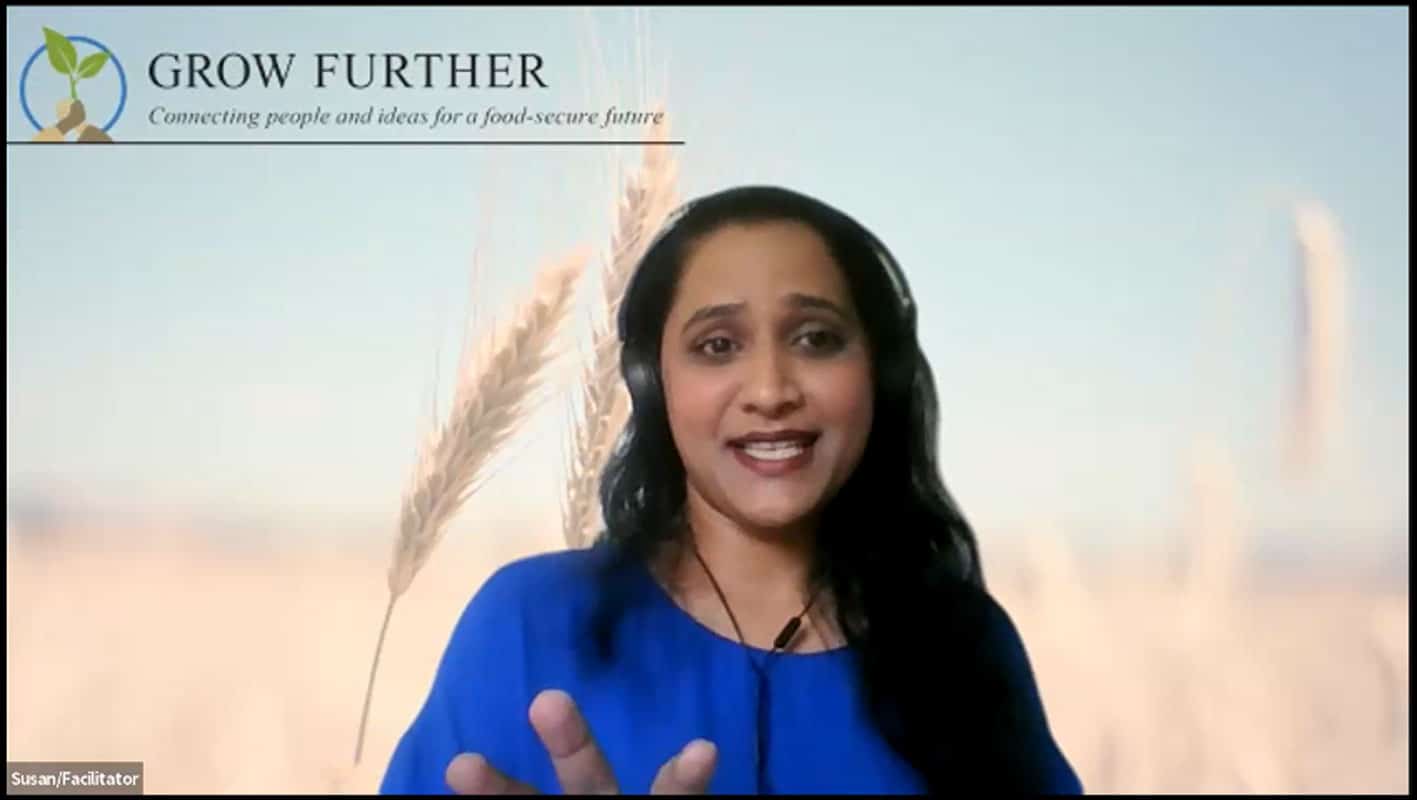“This hasn’t been done before,” Grow Further’s founder and CEO Peter Kelly said in his opening remarks after a round of self-introductions. “Never before has there been a simple answer to the question of ‘I want to shape the future of food security; how do I get involved?’ Nobody’s ever really had an answer to that question.”
So began our first Grow Further members circle meeting held last week. The significance of the event wasn’t lost on the management and donor members, both individual and organizational, gathered online to consider which agricultural innovation project (or projects) will receive grant support to enable innovative approaches to improving the lives and livelihoods of struggling smallholder farmers in developing countries. Many organizations offer ways to support food banks or even international food aid. But Grow Further is the first to offer a way to support and shape the future of food security through agricultural innovation, making it accessible to more than just a handful of specialists.
Grow Further members brought to the meeting a variety of perspectives not typically represented in international development, from a historian to members of developing-country diasporas who don’t specifically work in agricultural development. Members were presented with nine worthy peer-reviewed projects to consider. All aim to enhance food security and nutrition through improving indigenous crops, biofortification, or improving meat and dairy production.
We received over 700 grant applications in response to our first announcement. All were carefully reviewed and vetted, and all in this particular meeting were from sub-Saharan Africa, though Grow Further is also considering proposals from Asia. The selection work isn’t over yet, but our first members’ circle meeting brings Grow Further tantalizingly close to making its mark on agriculture history, as our founder Kelly reflected in his comments.
“In 100 years, when future historians write about the history of agriculture, this meeting may be part of that history,” he said. “There’ll probably be some hiccups along the way, and if so, we’ll do better next time.”
Shaping the history of food security
The meeting itself was conducted without any noticeable hiccups.
Susan Mathew, Grow Further’s Partnership Development Consultant, organized and led the online gathering. Our circle members had opportunities to review the applications and comments by our peer reviewers ahead of time. After self-introductions and Kelly’s opening comments, Mathew explained the voting process. The proposals under consideration that day were organized into three categories: indigenous crops, biofortification, and meat and dairy.
Grow Further is planning to support one of the proposals right away and potentially others soon. We’re not ready to announce a winning proposal just yet, but are getting close.
The circle members participating in last week’s meeting asked thoughtful and meaningful questions. One member expressed concern over a potential disconnect between ambition and available resources with some of the proposals. Members also asked us to consider Grow Further’s future direction once a winning project is ultimately selected—this is, after all, the beginning of our work, not its conclusion. Membership Director Jennifer Dine acknowledged this in comments she offered at the meeting’s close.
“Once we come to that consensus, the due diligence process on our end starts,” she explained. “We do our own background checking of the applicants, and then we present the applicants to the board for final approval. And then we will make our grants and the good work starts. After which, we’ll engage with the researcher to provide reporting back out to our membership on a consistent basis so you are aware of what’s going on with the project.”
In 100 years, when future historians write about the history of agriculture, this meeting may be part of that history.
Next steps
The beginning of our mission to fundamentally transform how agricultural research is funded and supported is the beginning of our circle members’ central role in this historic work, as well, Dine added. “As this year goes on, I hope to engage with our membership more and create a schedule of events, virtual and in person, to get us all together for networking and sharing of information, perhaps speakers, as well,” she said.
Our first members’ circle meeting occurred with an air of excitement and anticipation, but also with a little hint of nervousness. Given that what we are attempting has never been done before, perhaps this was inevitable. CEO Kelly alluded to this when at the launch of the meeting last week, but he reassured all of us that we are on the right track. “When it comes to things like funding innovation, a committee of specialists, like how other agricultural grant decisions are made, is a second-best decision mechanism,” he argued. “A first-best mechanism for filling in gaps in the innovation system is for a diverse group of people with a stake in the outcome, like we have here, to make a decision based on the input of specialists, in this case mostly other scientists working on the same continent as the applications they’ve reviewed for us.”
“Everyone here has important perspectives to contribute,” Kelly added, “so don’t be shy to participate.” And we would very much warmly welcome more of our newsletter subscribers to join as members and participate in similar activities. We are in exciting times here at Grow Further. Stay tuned.
— Grow Further
Photo credit: Board members, circle members, and management gathered online to select our very first Grow Further grant recipient.




